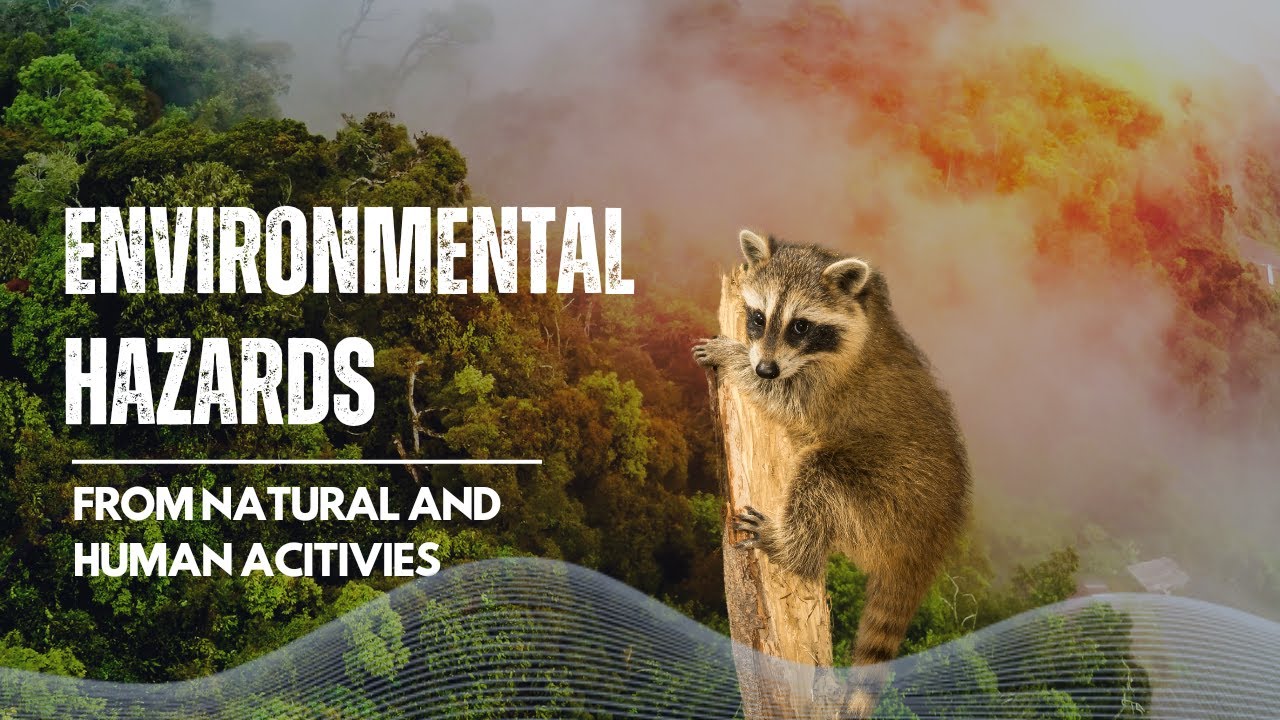Air Pollution 101 | National Geographic
Summary
TLDRAir pollution, stemming from both natural and human activities, poses significant health and environmental risks. Major contributors include burning fossil fuels for energy, leading to greenhouse gas emissions that trap heat and contribute to climate change. This cycle intensifies air pollution, such as smog, which has two forms: sulfurous from burning sulfur-bearing fuels and photochemical from reactions involving sunlight and pollutants. Toxic pollutants like mercury and lead, released from combustion and waste incineration, further harm the environment and health. Solutions involve reducing fossil fuel use to limit these pollutants, improving air quality and slowing global warming.
Takeaways
- 🌍 Air pollution is caused by chemicals or particles in the atmosphere that are harmful to health and the environment.
- 🔥 Natural sources like volcanic eruptions and wildfires contribute to air pollution, but human activities are the main cause.
- 🌿 Burning fossil fuels for energy releases greenhouse gases, contributing to global warming and climate change.
- 🔁 Climate change intensifies air pollution by increasing smog, mold, and pollen production due to higher temperatures.
- 🌫️ Smog, a type of air pollution, reduces visibility and has serious health effects; it's categorized into sulfurous and photochemical smog.
- 🚗 Photochemical smog is formed by the reaction of sunlight with nitrogen oxides and volatile organic compounds from car exhaust and industrial emissions.
- 🌳 Toxic pollutants like mercury and lead, released from combustion processes, cause environmental harm and serious health issues.
- 🛑 Reducing the use of fossil fuels in transportation, manufacturing, and electricity generation can limit toxic pollutants, smog, and greenhouse gases.
- 🌱 Addressing air pollution improves environmental quality, human health, and can slow the rate of global warming.
- 🔔 The script concludes with a call to action to reduce air pollution for a cleaner environment and better health.
Q & A
What is air pollution?
-Air pollution consists of chemicals or particles in the atmosphere that pose serious health and environmental threats.
What are the natural sources of air pollution?
-Natural sources of air pollution include volcanic eruptions, wildfires, and allergens.
How does human activity contribute to air pollution?
-Human activities, such as energy use in agriculture and burning fossil fuels, contribute to air pollution.
What are greenhouse gases and how are they related to air pollution?
-Greenhouse gases like carbon dioxide, methane, nitrous oxide, and fluorinated gases are released when burning fossil fuels, trapping heat in the Earth's atmosphere and contributing to air pollution.
How does air pollution contribute to climate change?
-Air pollution contributes to climate change by trapping heat and leading to a rise in global temperatures, which in turn intensifies some types of air pollution.
What is smog and how does climate change affect it?
-Smog is a type of air pollution that reduces visibility and has health effects. Climate change increases smog due to higher temperatures and increased levels of ultraviolet radiation.
What are the two categories of smog?
-Smog can be divided into sulfurous smog, which is made up of sulfur oxides, and photochemical smog, also known as ground-level ozone.
What are the sources of nitrogen oxides and volatile organic compounds that contribute to photochemical smog?
-Nitrogen oxides come from car exhaust, coal power plants, and factory emissions, while volatile organic compounds are released from gasoline, paints, and cleaning solvents.
What are toxic pollutants and what are their sources?
-Toxic pollutants are chemicals like mercury, lead, dioxins, and benzene that are released during gas or coal combustion, waste incineration, or burning of gasoline.
What are the health problems caused by toxic air pollution?
-Toxic air pollution can cause serious health problems such as cancer, reproductive complications, and birth defects.
What solutions are there to limit air pollution?
-We can limit air pollution by decreasing the use of fossil fuels in transportation, manufacturing, and electricity generation.
Outlines

This section is available to paid users only. Please upgrade to access this part.
Upgrade NowMindmap

This section is available to paid users only. Please upgrade to access this part.
Upgrade NowKeywords

This section is available to paid users only. Please upgrade to access this part.
Upgrade NowHighlights

This section is available to paid users only. Please upgrade to access this part.
Upgrade NowTranscripts

This section is available to paid users only. Please upgrade to access this part.
Upgrade NowBrowse More Related Video

Pencemaran Lingkungan (Pencemaran Air, Pencemaran Udara, dan Pencemaran Tanah)

Video 2.35 Ilustrasi dampak polusi udara

5 Dampak Limbah Pertambangan Bagi Lingkungan dan Makhluk Hidup

Video Pembelajaran Pencemaran Lingkungan (Air, Udara, Tanah)

Perubahan Lingkungan | Biologi Kelas 10

Environmental hazards
5.0 / 5 (0 votes)